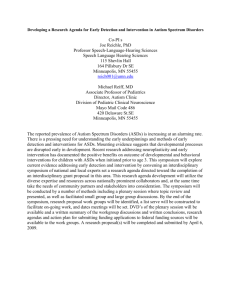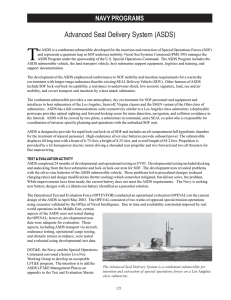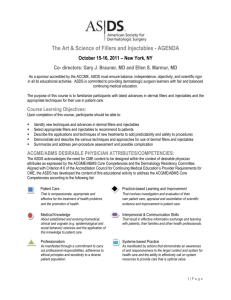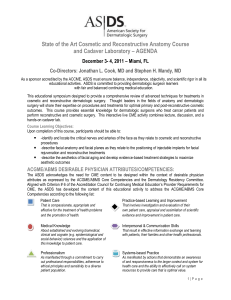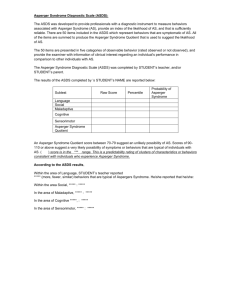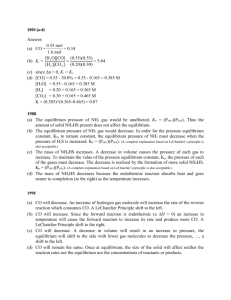Advanced SEAL Delivery System (ASDS) NAVY PROGRAMS
advertisement
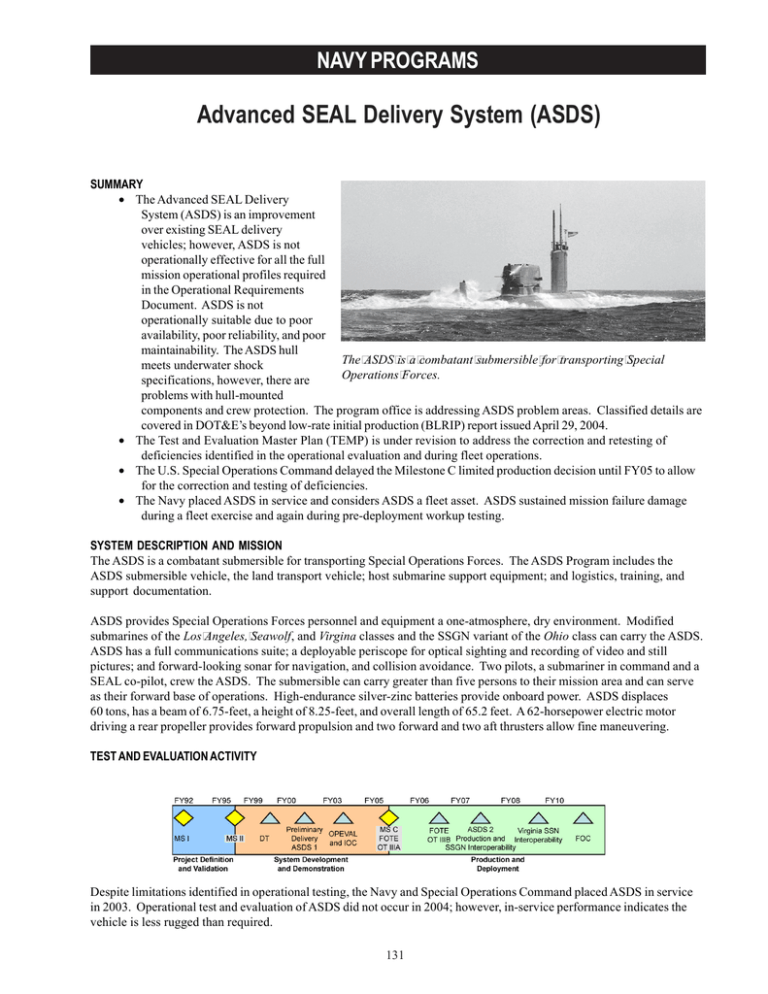
NAVY PROGRAMS Advanced SEAL Delivery System (ASDS) SUMMARY • The Advanced SEAL Delivery System (ASDS) is an improvement over existing SEAL delivery vehicles; however, ASDS is not operationally effective for all the full mission operational profiles required in the Operational Requirements Document. ASDS is not operationally suitable due to poor availability, poor reliability, and poor maintainability. The ASDS hull The ASDS is a combatant submersible for transporting Special meets underwater shock Operations Forces. specifications, however, there are problems with hull-mounted components and crew protection. The program office is addressing ASDS problem areas. Classified details are covered in DOT&E’s beyond low-rate initial production (BLRIP) report issued April 29, 2004. • The Test and Evaluation Master Plan (TEMP) is under revision to address the correction and retesting of deficiencies identified in the operational evaluation and during fleet operations. • The U.S. Special Operations Command delayed the Milestone C limited production decision until FY05 to allow for the correction and testing of deficiencies. • The Navy placed ASDS in service and considers ASDS a fleet asset. ASDS sustained mission failure damage during a fleet exercise and again during pre-deployment workup testing. SYSTEM DESCRIPTION AND MISSION The ASDS is a combatant submersible for transporting Special Operations Forces. The ASDS Program includes the ASDS submersible vehicle, the land transport vehicle; host submarine support equipment; and logistics, training, and support documentation. ASDS provides Special Operations Forces personnel and equipment a one-atmosphere, dry environment. Modified submarines of the Los Angeles, Seawolf, and Virgina classes and the SSGN variant of the Ohio class can carry the ASDS. ASDS has a full communications suite; a deployable periscope for optical sighting and recording of video and still pictures; and forward-looking sonar for navigation, and collision avoidance. Two pilots, a submariner in command and a SEAL co-pilot, crew the ASDS. The submersible can carry greater than five persons to their mission area and can serve as their forward base of operations. High-endurance silver-zinc batteries provide onboard power. ASDS displaces 60 tons, has a beam of 6.75-feet, a height of 8.25-feet, and overall length of 65.2 feet. A 62-horsepower electric motor driving a rear propeller provides forward propulsion and two forward and two aft thrusters allow fine maneuvering. TEST AND EVALUATION ACTIVITY Despite limitations identified in operational testing, the Navy and Special Operations Command placed ASDS in service in 2003. Operational test and evaluation of ASDS did not occur in 2004; however, in-service performance indicates the vehicle is less rugged than required. 131 NAVY PROGRAMS In late 2003, ASDS participated in a Fleet Exercise. The exercise involved transporting ASDS on a C-5 aircraft, certifying the ASDS and a host submarine to conduct operations, and completing an ASDS operational Special Operations Forces training exercise. While returning from the exercise site, the ASDS sustained damage to its stern planes, propeller shroud and propeller. The Navy’s investigation of the incident attributed the cause to improper maintenance. The Navy changed the maintenance procedures and improved the design of the propeller and stern plane couplings to prevent recurrence of this failure. ASDS returned to service in April 2004. In June 2004, the Navy conducted retesting of repairs to the ASDS. During the test, the ASDS propeller shroud broke off causing damage to the ASDS’s propeller. The Navy’s investigation revealed improper manufacturing of the shroud. Navy modeling and measurements also indicated unstable seawater flow exists around the aft end of ASDS and causes unplanned cyclic stresses on the aft end components. The Navy is evaluating the effects of the cyclic stresses and is evaluating operating the ASDS without the propeller shroud. In May 2004, the Navy selected a new battery design. The selected Lithium Ion battery could solve problems with meeting battery turnaround time and cycle life requirements. This new design battery should be ready for testing in the summer 2005. DOT&E worked with the Navy to define the ASDS Live Fire Test and Evaluation (LFT&E) program and to evaluate its vulnerability using finite element modeling analyses. DOT&E approved the LFT&E Management Plan in December 2003. Subsequently, the Navy submitted the waiver for full-up system level testing to Congress in February 2004. A revision to the TEMP to address the correction and retesting of deficiencies identified during operational testing and fleet operations is in progress and should complete in 2005. TEST AND EVALUATION ASSESSMENT DOT&E delivered the BLRIP report to Congress in April 2004 (which also contains the classified data). That report stated: • Testing was adequate to evaluate the current state of development of ASDS. • Demonstrated performance necessitates retesting after ASDS main battery replacement and correction of other problems. • ASDS is an improvement over the existing SEAL Delivery Vehicles. • ASDS is operationally effective for short range and duration missions and for some mission profiles; however, it is not effective for all the mission and threat profiles desired by the user in the Operational Requirements Document. • ASDS’s noise problems must be fixed and the acoustic signature re-measured. • ASDS is not operationally suitable due to low availability, low reliability, and low maintainability. • Low Silver Zinc battery in-service life and the long time needed to recharge the battery drove the unsuitability determination. • ASDS also experiences recurring low electrical grounds and mechanical pump failures. • Results of finite element modeling studies indicate the ASDS hull meets underwater shock specifications for resistance to hull rupture; however, there are problems with the hull mounted components and crew protection. Pending the development and installation of the Lithium-Ion Battery, the Navy and U.S. Special Operations Command are operating the ASDS at sea. These operations indicated a lack of ruggedness in the stern of the submersible, which has the potential to disable propulsion. The Navy attributed poor maintenance and faulty fabrication in the factory are responsible for the failures. These and other problems and corrections indicate the ASDS design requires review. ASDS requires further test and evaluation to verify correction of the deficiencies associated with the battery, electrical system grounds, noise signature, stern area problems, and other identified deficiencies. 132
